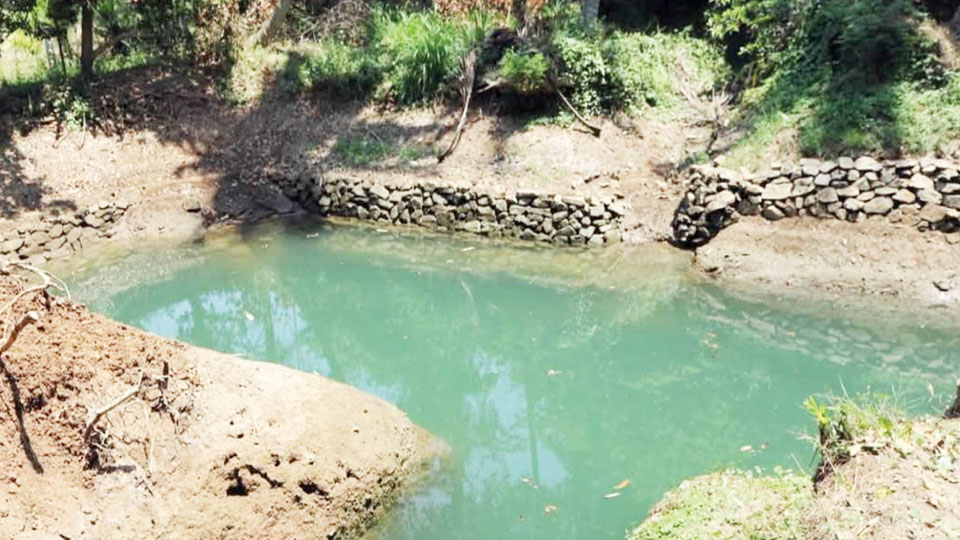- info@example.com

From 2015 to 2024, all taluks record an average 1 ft. rise in groundwater level
Mysuru: On World Earth Day today (Apr. 22), Mysuru celebrates a water revival. Thanks to copious rains and a robust monsoon in 2024, the district’s groundwater table has received a much-needed boost, signalling nature’s recovery and effective stewardship.
All nine taluks — Mysuru, H.D. Kote, Hunsur, K.R. Nagar, Nanjangud, Periyapatna, T. Narasipur, Saragur and Saligrama — have recorded a healthy increase in groundwater levels. Over the last decade (2015-2024), the district has seen an encouraging average rise of 0.32 metres (1 ft.), a testament to both rainfall and mindful water usage.
Today, groundwater in Mysuru is available at an average depth of just 26.41 ft., a sharp contrast to cities like Bengaluru, where the water table plunges beyond 150 ft. This shallow depth reflects not just favourable weather but also Mysuru’s growing commitment to sustainable water management — a true cause for celebration this Earth Day.
10-year data
The yearly average groundwater level across the nine taluks has varied over the years, recording 10.5 metres (34.44 ft.) in 2015, 12.96 metres (42.51 ft.) in 2016, 13.65 metres (44.77 ft.) in 2017, 10.68 metres (35.03 ft.) in 2018, 10.47 metres (34.34 ft.) in 2019, 10.06 metres (33.00 ft.) in 2020, 10.26 metres (33.65 ft.) in 2021, 7.52 metres (24.67 ft.) in 2022, 10.05 metres (32.96 ft.) in 2023 and 10.18 metres (33.39 ft.) in 2024. Overall, the average rise across the district has been recorded at 0.32 meters (1 ft.) in 10 years.
While there were some fluctuations, the long-term trend indicates gradual improvement, largely attributed to good rainfall patterns and increased awareness of water conservation.
In addition to the rise in groundwater levels, data from the Government also shows a steady improvement in static water levels — the depth at which water stands in a well or borehole under normal, undisturbed conditions.
Rain and groundwater recharge
Speaking to Star of Mysore, Dr. Prasanna Kumar, Senior Geologist, District Groundwater Office, Ground Water Directorate, Mysuru, said that heavy to very heavy rainfall during 2024 contributed to significant groundwater recharge across the region.
Mysuru district received 965 mm of rainfall between Jan. 1 and Dec. 31, 2024, surpassing the normal annual average of 837 mm, according to the Karnataka State Natural Disaster Monitoring Centre.
He noted that Mysuru is categorised as a ‘safe district’ when it comes to groundwater usage. “While cities like Bengaluru report over 100 percent usage, indicating excessive exploitation — Mysuru utilises only about 55 percent of its groundwater, leaving 45 percent intact. A district where usage remains between 0 to 60 percent is considered safe,” he explained.
Rainwater harvesting
Groundwater in the district is primarily used for drinking, irrigation and commercial activities. According to Dr. Prasanna, increased adoption of rainwater harvesting by residents, encouraged by the District Administration and the Mysuru City Corporation, is also playing a vital role in conservation.
“There is renewed public interest in rainwater harvesting, and many homes are taking steps in that direction. Moreover, after 2021, the Mysuru Deputy Commissioner has been insisting on all Govt. offices to mandatorily implement rainwater harvesting. This has led to widespread adoption of the system,” he said.
With Mysuru receiving about 800 mm of rainfall annually, even a modest 200 sq. ft rooftop can harvest up to 15,000 litres of water every year. For a family of five to six members, whose average household water requirement is around 10,000 litres, this harvested rainwater alone can meet the annual demand.
At present, the groundwater situation in Mysuru city and the district headquarters is not under threat, as the city’s water supply is largely sourced from surface water bodies like the Krishna Raja Sagar (KRS) Dam and the Kabini Dam. Additionally, lift irrigation projects that fill village lakes, tanks and ponds have significantly contributed to groundwater recharge.
Studies assessing pollution due to urbanisation have shown no significant adverse effects on water quality in the region. Groundwater quality across the Mysuru district is generally good and potable. The Central Ground Water Board, which monitors water quality annually, has consistently reported that the groundwater here remains of high quality.
The post Groundwater levels in Mysuru steadily rise appeared first on Star of Mysore.